ADDICKS AND BARKER RESERVOIRS ARE NOW COMPLETELY EMPTY AND READY FOR THE NEXT FLOOD 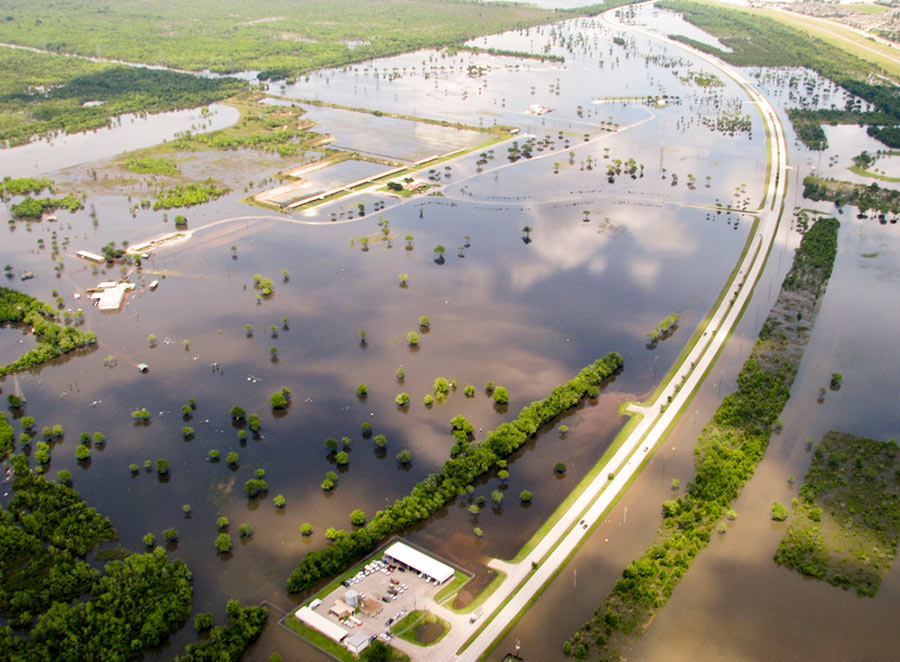 All water stuck behind the Addicks and Barker dams has now been released, the Army Corps of Engineers announced late yesterday. That means that for the first time since Hurricane Harvey-triggered rains began filling the 24,520-acre reservoirs, they are now dry and available for use again as parkland. The last bits of water actually left the Addicks and Barker reservoirs last Thursday, October 12th, and Friday the 13th respectively; the announcement was delayed, a public-affairs officer tells reporter Amelia Brust, in order to “receive legal guidance.” The Corps, writes Brust, “is now a defendant in multiple lawsuits brought by surrounding property owners who say their homes and businesses were flooded as a result of the dams’ releases.” [Community Impact] Photo of American Shooting Centers and Millie Bush Dog Park off Westheimer Pkwy. in Barker Reservoir, flooded after Memorial Day, 2015: U.S. Army Corps of Engineers [license]
All water stuck behind the Addicks and Barker dams has now been released, the Army Corps of Engineers announced late yesterday. That means that for the first time since Hurricane Harvey-triggered rains began filling the 24,520-acre reservoirs, they are now dry and available for use again as parkland. The last bits of water actually left the Addicks and Barker reservoirs last Thursday, October 12th, and Friday the 13th respectively; the announcement was delayed, a public-affairs officer tells reporter Amelia Brust, in order to “receive legal guidance.” The Corps, writes Brust, “is now a defendant in multiple lawsuits brought by surrounding property owners who say their homes and businesses were flooded as a result of the dams’ releases.” [Community Impact] Photo of American Shooting Centers and Millie Bush Dog Park off Westheimer Pkwy. in Barker Reservoir, flooded after Memorial Day, 2015: U.S. Army Corps of Engineers [license]
Flooding
COMMENT OF THE DAY: WHAT YOU’RE SEEING AND SMELLING IN FLOODED APARTMENTS  “I have a question regarding the apartments in Kingwood. There is a statement in the letter from the apartments indicating that there is a clear difference between mold and mildew. I understand it as they are both one and the same when it comes to interior livable spaces. If it smells and-or is visible you have a problem irregardless of the classification of mold or mildew.
Is this not correct? Is there a legal distinction per Texas Law? Can someone please chime in? Thanks.” [It Smells, commenting on The City That Will Be Building and Rebuilding Forever; Houston’s Long Amazon Odds; The Latest Poke Place] Illustration: Lulu
“I have a question regarding the apartments in Kingwood. There is a statement in the letter from the apartments indicating that there is a clear difference between mold and mildew. I understand it as they are both one and the same when it comes to interior livable spaces. If it smells and-or is visible you have a problem irregardless of the classification of mold or mildew.
Is this not correct? Is there a legal distinction per Texas Law? Can someone please chime in? Thanks.” [It Smells, commenting on The City That Will Be Building and Rebuilding Forever; Houston’s Long Amazon Odds; The Latest Poke Place] Illustration: Lulu
SURVEYING THE SOGGY AFTERMATH OF HOUSTON’S ULTIMATE HOME-TOUR TEST 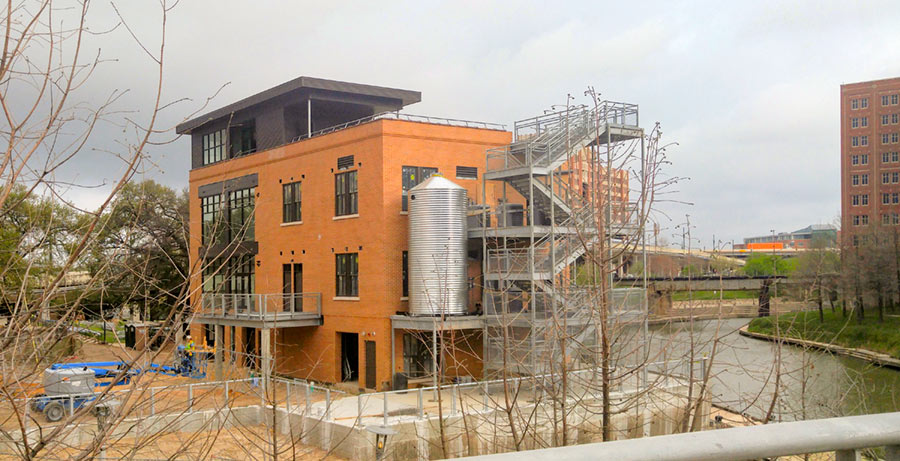 Talk about timing: The Rice Design Alliance’s annual home tour this past March opened to inspection 6 structures built in Houston floodplains with some sort of strategy to make it through a major water event. How’d these properties survive the cataclysm that followed only 5 months later? A 1965 Meyerland home on the tour by Houston architects Brooks and Brooks one block north of Brays Bayou was damaged, Jack Murphy reports. And his follow-up story on the RDA’s H2Ouston tour includes no word on the Harvey experiences of François de Menil’s 5-story Temple Terrace townhome or the 3-story butterfly-roof home on Logan Ln. backing up to Buffalo Bayou Taft Architects built in 1996. But 2 more recently built homes on the tour — 2-story structures by architects Brett Zamore in Linkwood and Nonya Grenader in Shirkmere survived without much more than messes in their garages (and a flooded-out car), according to Murphy. Then there’s the Sunset Coffee Building fronting Buffalo Bayou Downtown, which serves as the offices of the Buffalo Bayou Partnership, and which in its recent redo by Lake Flato and BNIM (pictured), was designed to take on water: “All sources indicate that the design performed as anticipated. . . . The staff moved exhibit materials to the second floor and secured the elevator on an upper floor. But there are always issues. The grease trap filled with water, thermostats need to be replaced, and the elevator shaft had five feet of standing water at the bottom, causing electrical issues. Security cameras mounted on the building filled with water and malfunctioned. The fire alarm went off for four days, making the area sound like a war zone, even catching the attention of a CNN reporter. Still, water didn’t crest into the offices on the second floor. (It was almost this high during Allison.) Shortly after the waters receded, the building was habitable again.” But this sort of resilience wasn’t just added to the building by its renovators: “The BBP’s Rebecca Leija and Anne Olson told me their insurance adjuster said the Sunset Building, built in 1910, was well-suited to handle floods due to its height and angle relative to the bayou. Sure enough, in plan the building is set at an angle to the bayou’s flow, presenting a corner to floodwaters rather than a flat face. And, its east façade breaks slightly, perhaps to further reduce the surface area ‘seen’ by floodwaters and therefore reduce their force on the walls and foundation.” [OffCite] Photo of Sunset Coffee Building renovation: Adam Williams
Talk about timing: The Rice Design Alliance’s annual home tour this past March opened to inspection 6 structures built in Houston floodplains with some sort of strategy to make it through a major water event. How’d these properties survive the cataclysm that followed only 5 months later? A 1965 Meyerland home on the tour by Houston architects Brooks and Brooks one block north of Brays Bayou was damaged, Jack Murphy reports. And his follow-up story on the RDA’s H2Ouston tour includes no word on the Harvey experiences of François de Menil’s 5-story Temple Terrace townhome or the 3-story butterfly-roof home on Logan Ln. backing up to Buffalo Bayou Taft Architects built in 1996. But 2 more recently built homes on the tour — 2-story structures by architects Brett Zamore in Linkwood and Nonya Grenader in Shirkmere survived without much more than messes in their garages (and a flooded-out car), according to Murphy. Then there’s the Sunset Coffee Building fronting Buffalo Bayou Downtown, which serves as the offices of the Buffalo Bayou Partnership, and which in its recent redo by Lake Flato and BNIM (pictured), was designed to take on water: “All sources indicate that the design performed as anticipated. . . . The staff moved exhibit materials to the second floor and secured the elevator on an upper floor. But there are always issues. The grease trap filled with water, thermostats need to be replaced, and the elevator shaft had five feet of standing water at the bottom, causing electrical issues. Security cameras mounted on the building filled with water and malfunctioned. The fire alarm went off for four days, making the area sound like a war zone, even catching the attention of a CNN reporter. Still, water didn’t crest into the offices on the second floor. (It was almost this high during Allison.) Shortly after the waters receded, the building was habitable again.” But this sort of resilience wasn’t just added to the building by its renovators: “The BBP’s Rebecca Leija and Anne Olson told me their insurance adjuster said the Sunset Building, built in 1910, was well-suited to handle floods due to its height and angle relative to the bayou. Sure enough, in plan the building is set at an angle to the bayou’s flow, presenting a corner to floodwaters rather than a flat face. And, its east façade breaks slightly, perhaps to further reduce the surface area ‘seen’ by floodwaters and therefore reduce their force on the walls and foundation.” [OffCite] Photo of Sunset Coffee Building renovation: Adam Williams
WHAT MAKES WEST HOUSTON THE BERMUDA TRIANGLE OF REAL ESTATE DISCLOSURE 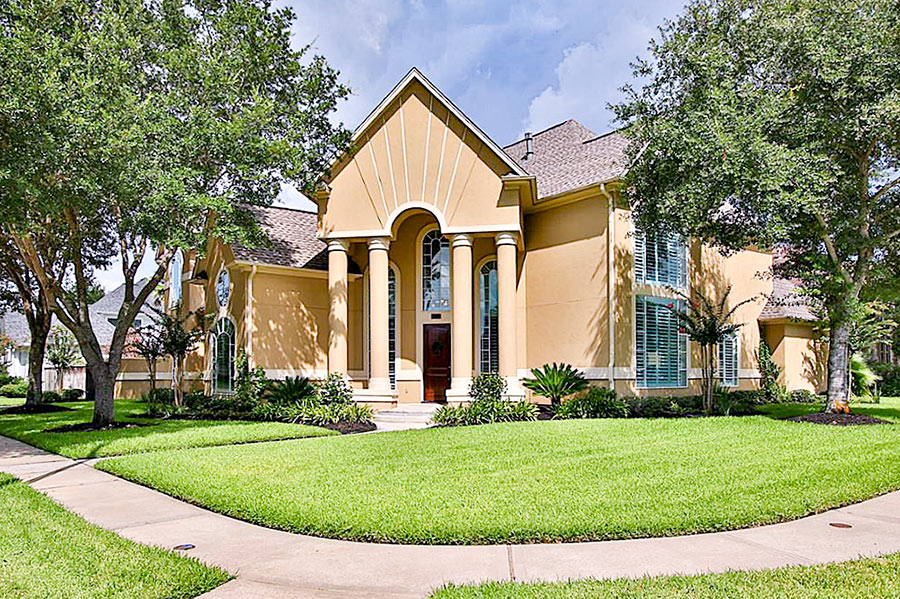 “None of the more than half a dozen residents interviewed by The Texas Tribune and ProPublica after the floods said they knew they were living inside Addicks or Barker — many of their neighborhoods are several miles away from the dams. Several local officials — including Houston’s ‘flood czar’ and a neighboring county executive — said they had no idea the neighborhoods had been built inside the flood pools. Several real estate agents said they didn’t realize they were selling homes inside the pools.” This from the latest exposé on how 14,000 homes came to be located in designed-to-flood areas inside the Addicks and Barker reservoirs. First, the good news: Of those 14,000 homes, only 5,138 of them flooded this time! Among the many additional OMG-worthy revelations from this latest report from the crack Houston-flooding investigations team of Neena Satija, Kiah Collier, and Al Shaw: Of those homes built inside the reservoirs, at least 4,000 of them were built after Tropical Storm Allison hit in 2001. That’s interesting to note, considering that a Harris County Flood Control District report published in 2003 warned that as many as 2,000 acres of private land inside the reservoirs might easily have flooded in that storm if the rains had fallen in a slightly different location. Also included: this little glance at the area’s real-estate future: “One five-bedroom home in Lakes on Eldridge . . . was listed for $678,000 about two weeks before it flooded during Harvey. The seller’s agent, Moira Holden, tried to put a positive spin on things when she updated the online listing that decreased the asking price by $10,000. ‘Unfortunately this stunning home did flood and is being refurbished to the highest spec!’ it says. ‘Fabulous chance to choose your finishes!‘ When asked if she would disclose to potential buyers that the home was inside Addicks Reservoir, Holden didn’t have a clear answer. ‘I will obviously disclose whatever we are required to disclose,’ she said, pointing out that the home wasn’t in a floodplain. ‘I would hope that the buyer’s Realtor would do their due diligence on that.'” [Texas Tribune; previously on Swamplot] Photo of 13119 Shermons Pond, for sale in Lakes on Eldridge: HAR
“None of the more than half a dozen residents interviewed by The Texas Tribune and ProPublica after the floods said they knew they were living inside Addicks or Barker — many of their neighborhoods are several miles away from the dams. Several local officials — including Houston’s ‘flood czar’ and a neighboring county executive — said they had no idea the neighborhoods had been built inside the flood pools. Several real estate agents said they didn’t realize they were selling homes inside the pools.” This from the latest exposé on how 14,000 homes came to be located in designed-to-flood areas inside the Addicks and Barker reservoirs. First, the good news: Of those 14,000 homes, only 5,138 of them flooded this time! Among the many additional OMG-worthy revelations from this latest report from the crack Houston-flooding investigations team of Neena Satija, Kiah Collier, and Al Shaw: Of those homes built inside the reservoirs, at least 4,000 of them were built after Tropical Storm Allison hit in 2001. That’s interesting to note, considering that a Harris County Flood Control District report published in 2003 warned that as many as 2,000 acres of private land inside the reservoirs might easily have flooded in that storm if the rains had fallen in a slightly different location. Also included: this little glance at the area’s real-estate future: “One five-bedroom home in Lakes on Eldridge . . . was listed for $678,000 about two weeks before it flooded during Harvey. The seller’s agent, Moira Holden, tried to put a positive spin on things when she updated the online listing that decreased the asking price by $10,000. ‘Unfortunately this stunning home did flood and is being refurbished to the highest spec!’ it says. ‘Fabulous chance to choose your finishes!‘ When asked if she would disclose to potential buyers that the home was inside Addicks Reservoir, Holden didn’t have a clear answer. ‘I will obviously disclose whatever we are required to disclose,’ she said, pointing out that the home wasn’t in a floodplain. ‘I would hope that the buyer’s Realtor would do their due diligence on that.'” [Texas Tribune; previously on Swamplot] Photo of 13119 Shermons Pond, for sale in Lakes on Eldridge: HAR
COMMENT OF THE DAY: A BETTER IDEA FOR WHAT TO DO WITH THE SPACES UNDER FREEWAYS IN HOUSTON  “. . . This gave me an idea. That land under freeways isn’t good for retail or anything inhabited. But it could be a perfect place to dig down and create auxiliary stormwater detention facilities.
Yeah the water will be filthy, like your friends bikes usually are, but floodwater usually is. And as auxiliary detention they would only be used in extreme rainfall events (once or twice a year during so-called ‘hundred year’ storms).” [ZAW, commenting on Comment of the Day Second Runner-Up: Things To Think About Before You Start Planning Under-Freeway Developments] Illustration: Lulu
“. . . This gave me an idea. That land under freeways isn’t good for retail or anything inhabited. But it could be a perfect place to dig down and create auxiliary stormwater detention facilities.
Yeah the water will be filthy, like your friends bikes usually are, but floodwater usually is. And as auxiliary detention they would only be used in extreme rainfall events (once or twice a year during so-called ‘hundred year’ storms).” [ZAW, commenting on Comment of the Day Second Runner-Up: Things To Think About Before You Start Planning Under-Freeway Developments] Illustration: Lulu
HOUSING AUTHORITY: OUR FLOODED CLAYTON HOMES DEVELOPMENT WAS GOING TO BE DEMOLISHED ANYWAY 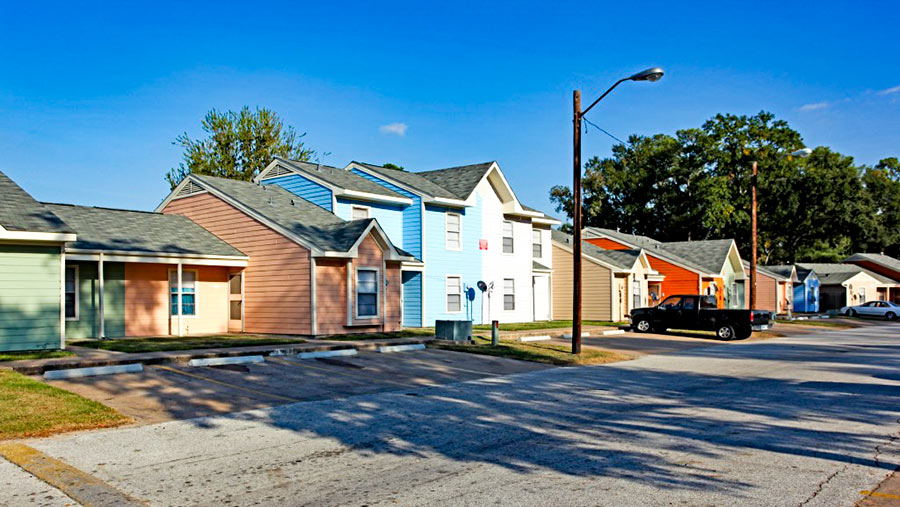 A new statement from the Houston Housing Authority provides a little more background on its decision to demolish 112 of the 296 units at the authority’s Clayton Homes low-income housing neighborhood just east of Hwy 59 at the northern tip of EaDo. The homes were deemed “uninhabitable” after flooding from Hurricane Harvey triggered mold and other health concerns: “HHA decided demolition was the best course of action for the damaged units since the entire property is located on land acquired by eminent domain and will face eventual demolition for TxDOT’s I-45 freeway extension. When the remainder of Clayton units are demolished in a few years, the remaining residents will either be relocated to another public housing unit or receive HCVs.” Housing Choice (formerly Section 8) Vouchers — along with moving assistance and payments — are also being provided to residents of 82 out of the 100 units at another Housing Authority development, Forest Green Townhomes at 8945 Forest Hollow St. in northeast Houston, which the authority today announced had also been rendered unlivable by the storm. [Houston Housing Authority; previously on Swamplot] Photo of pre-Harvey Forest Green Townhomes: Forest Green
A new statement from the Houston Housing Authority provides a little more background on its decision to demolish 112 of the 296 units at the authority’s Clayton Homes low-income housing neighborhood just east of Hwy 59 at the northern tip of EaDo. The homes were deemed “uninhabitable” after flooding from Hurricane Harvey triggered mold and other health concerns: “HHA decided demolition was the best course of action for the damaged units since the entire property is located on land acquired by eminent domain and will face eventual demolition for TxDOT’s I-45 freeway extension. When the remainder of Clayton units are demolished in a few years, the remaining residents will either be relocated to another public housing unit or receive HCVs.” Housing Choice (formerly Section 8) Vouchers — along with moving assistance and payments — are also being provided to residents of 82 out of the 100 units at another Housing Authority development, Forest Green Townhomes at 8945 Forest Hollow St. in northeast Houston, which the authority today announced had also been rendered unlivable by the storm. [Houston Housing Authority; previously on Swamplot] Photo of pre-Harvey Forest Green Townhomes: Forest Green
COMMENT OF THE DAY: DON’T SAY I DIDN’T WARN YOU ABOUT THE WHOLE MOLD BUSINESS  “So for homeowners you just cut the sheetrock, and rebuild all of the stuff at 3 feet and go down the road? My feeling is that every house that flooded has some trace of E. Coli and mold. Pretty soon you’ll see mold lawyer commercials suing every contractor that worked in these places. Doctors will soon get in on the action too. Hell, back in 2000 when mold lawsuits were born my framer had a magnetic door sign for ‘mold testing and remediation’ in the back seat of his pick-up. Get ready for it again.” [Sporey McGee, commenting on Housing Authority Ready To Demolish More Than a Third of Clayton Homes After Harvey Flooding] Illustration: Lulu
“So for homeowners you just cut the sheetrock, and rebuild all of the stuff at 3 feet and go down the road? My feeling is that every house that flooded has some trace of E. Coli and mold. Pretty soon you’ll see mold lawyer commercials suing every contractor that worked in these places. Doctors will soon get in on the action too. Hell, back in 2000 when mold lawsuits were born my framer had a magnetic door sign for ‘mold testing and remediation’ in the back seat of his pick-up. Get ready for it again.” [Sporey McGee, commenting on Housing Authority Ready To Demolish More Than a Third of Clayton Homes After Harvey Flooding] Illustration: Lulu
HOUSING AUTHORITY READY TO DEMOLISH MORE THAN A THIRD OF CLAYTON HOMES AFTER HARVEY FLOODING 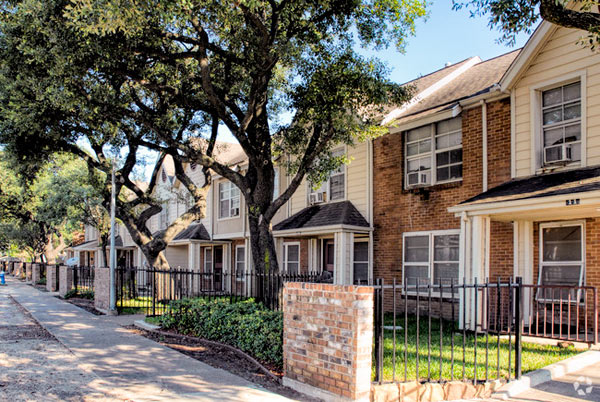 112 of the 296 apartments at Clayton Homes have been deemed “uninhabitable” by its owner, the Houston Housing Authority, which is now seeking to demolish them. The affordable-housing complex tucked between Hwy. 59 and Buffalo Bayou north of Runnels St. in the northwest corner of the East End was flooded after Hurricane Harvey; subsequent investigations conducted by local researchers led by the New York Times and by the authority found numerous health and safety problems in the residences, including festering mold and high levels of E. coli. Submitting a demolition request for those units allowed the authority to receive and distribute “tenant protection vouchers” that will allow their residents to relocate to any voucher-accepting unit in the city, a spokesperson for the agency says: “Since Hurricane Harvey caused extensive damage to many of HHA’s public housing properties, housing options within HHA’s public housing program are now exhausted, which is why residents are receiving vouchers.” The agency says it is also helping Clayton Homes residents not eligible for the vouchers as well to find new homes — with relocation assistance services and one-time payments — and that it is refunding rents collected for periods when homes in the complex were uninhabitable. Photo: Apartments.com
112 of the 296 apartments at Clayton Homes have been deemed “uninhabitable” by its owner, the Houston Housing Authority, which is now seeking to demolish them. The affordable-housing complex tucked between Hwy. 59 and Buffalo Bayou north of Runnels St. in the northwest corner of the East End was flooded after Hurricane Harvey; subsequent investigations conducted by local researchers led by the New York Times and by the authority found numerous health and safety problems in the residences, including festering mold and high levels of E. coli. Submitting a demolition request for those units allowed the authority to receive and distribute “tenant protection vouchers” that will allow their residents to relocate to any voucher-accepting unit in the city, a spokesperson for the agency says: “Since Hurricane Harvey caused extensive damage to many of HHA’s public housing properties, housing options within HHA’s public housing program are now exhausted, which is why residents are receiving vouchers.” The agency says it is also helping Clayton Homes residents not eligible for the vouchers as well to find new homes — with relocation assistance services and one-time payments — and that it is refunding rents collected for periods when homes in the complex were uninhabitable. Photo: Apartments.com
ALL THE DAMS AND MAGIC WETLANDS CAN DO 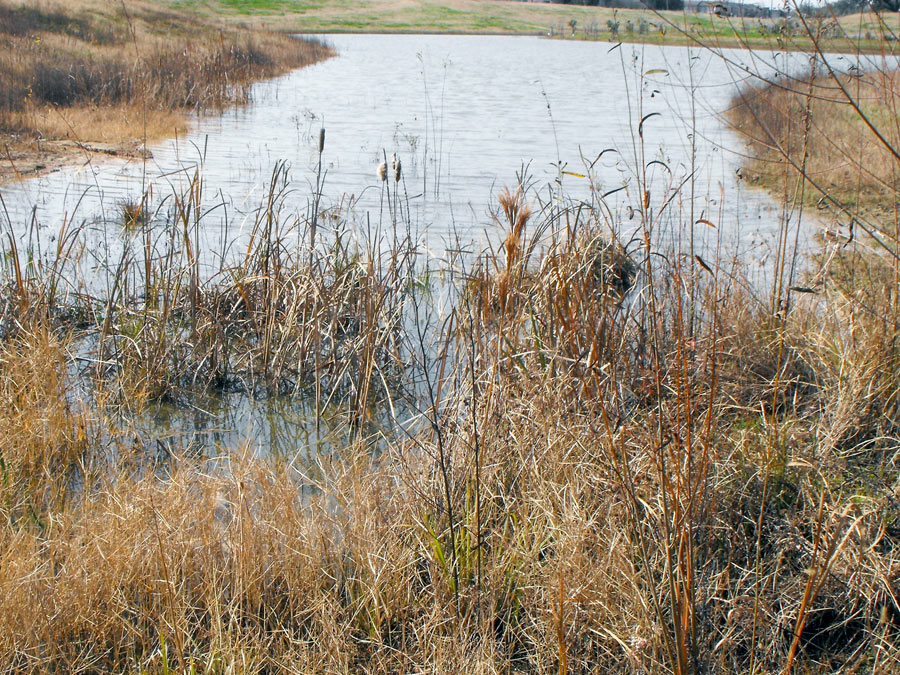 Big, fat, cleared floodplains are the best way to handle a very large storm, explains wetlands scientist John Jacob — because nothing else is going to: “An average rainfall of 35 inches over all of Harris County (Harvey) is just over 1 trillion gallons. At most, there are about 50 billion gallons of stormwater detention capacity in Harris County wetlands (no one has measured this — I had to make some very broad assumptions). So that means that the wetlands at best could handle about 5% of the total volume of Harvey rainfall. In the large scheme of things, it’s not much. And the scheme of things in Harvey is indeed very large.
So much for the magic wetlands. But what about our engineered drainage system? I calculate a somewhat larger detention capacity — between our large US Army Corps of Engineers Katy Prairie reservoirs (~400,000 acre-ft) and Harris County Flood Control District detention (about 34,000 acre-feet), we have about 130 billion gallons of detention volume. More than what we have for wetlands, but still only about 14% of Harvey. As we painfully saw, also overwhelmed.
And what of green stormwater infrastructure — rain gardens, bioswales, green roofs, etc.? We don’t have any good numbers here, but you can be sure that even if these practices were widespread, the volume would be very small relative to wetlands and detention basins. These practices are designed to capture at best a 2 inch storm.” [Watershed Texas] Photo of Willow Waterhole Greenspace: Luz (license)
Big, fat, cleared floodplains are the best way to handle a very large storm, explains wetlands scientist John Jacob — because nothing else is going to: “An average rainfall of 35 inches over all of Harris County (Harvey) is just over 1 trillion gallons. At most, there are about 50 billion gallons of stormwater detention capacity in Harris County wetlands (no one has measured this — I had to make some very broad assumptions). So that means that the wetlands at best could handle about 5% of the total volume of Harvey rainfall. In the large scheme of things, it’s not much. And the scheme of things in Harvey is indeed very large.
So much for the magic wetlands. But what about our engineered drainage system? I calculate a somewhat larger detention capacity — between our large US Army Corps of Engineers Katy Prairie reservoirs (~400,000 acre-ft) and Harris County Flood Control District detention (about 34,000 acre-feet), we have about 130 billion gallons of detention volume. More than what we have for wetlands, but still only about 14% of Harvey. As we painfully saw, also overwhelmed.
And what of green stormwater infrastructure — rain gardens, bioswales, green roofs, etc.? We don’t have any good numbers here, but you can be sure that even if these practices were widespread, the volume would be very small relative to wetlands and detention basins. These practices are designed to capture at best a 2 inch storm.” [Watershed Texas] Photo of Willow Waterhole Greenspace: Luz (license)
Here’s a commandeerable after-and-before flooding shot, taken from a drone hovering 300 ft. above Hwy. 6 just north of the Barker Reservoir spillway. Move the slider at the bottom of the image to toggle slowly between the 2 views, taken Thursday, August 24th (on the right, not long before the arrival of Hurricane Harvey) and Tuesday, August 29th (on the left, after stormwater filled the reservoir and the flooded the area). You can also rotate and zoom the image with your pointing device or finger.
In the initial view, the camera is facing straight down Addicks-Howell Rd.; the wider Hwy. 6 appears to veer off to the left. Addicks-Howell marks the entrance to Fleetwood, the adjacent neighborhood. Rotate the view 180 degrees to see the spillway.
Houston visualization firm Reality Imaging & Mapping Technologies took the panoramic images and stitched them together to create the immersive and zoomable view, which can also be experienced as a VR image. Click here to view the image in its own browser window.
Image: Reality Imaging & Mapping Technologies
ALLEY THEATRE FLOODING DRAMA CAME FROM AN ALLEY THIS TIME, NOT THE TUNNEL 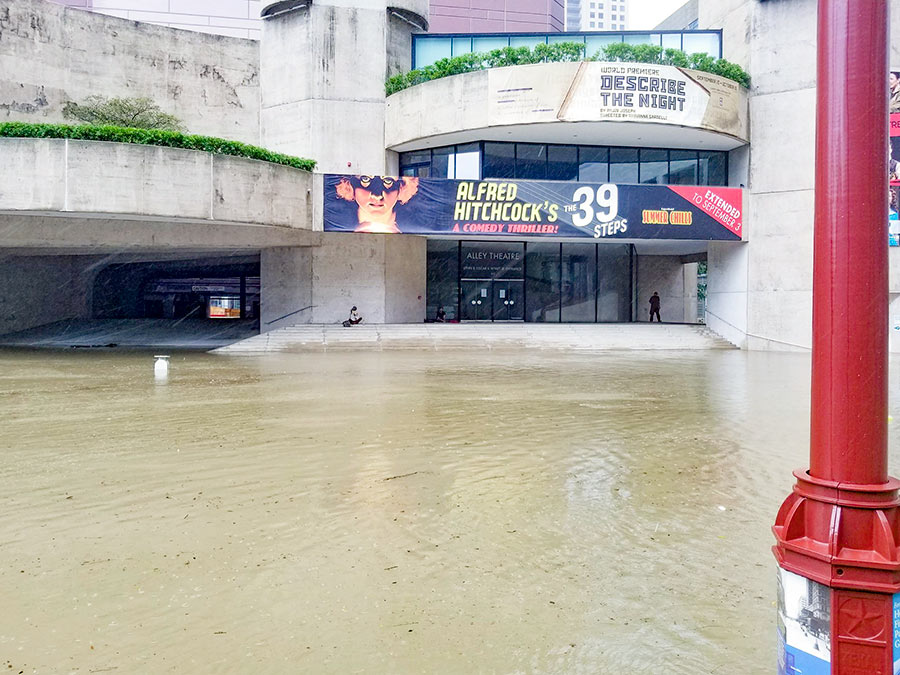 Harvey flooding caused an estimated $15 million of damage to the Alley Theatre’s basement-level stage, lobby, and dressing rooms, but for the most part spared its recently renovated box-office entrance, main stage, and upper-level lobbies. The good news, relayed by theater managing director Dean Gladden in an email to members: Submarine doors in the tunnel prevented water flowing from the Theater District’s underground parking garage from entering the theater as it had during Tropical Storm Allison. But this time there was another way in: a fresh-air intake vent in the Alley’s drive-thru Alleyway driveway fronting Jones Plaza on Texas Ave. (pictured at left in the above photo): “Harvey’s waters crested so high that this in-take vent provided an opening that enabled the flood waters to enter the building unimpeded. The water was so powerful it knocked through a cement block wall and blew open locked doors. When the cement block wall collapsed, it broke a 2-foot fire line that started spewing water out at 150 gallons a minute. About 900,000 gallons of water would come from this source before it was turned off. The flood water from the bayou would account for 2.8 million gallons of water. The water would reach 10-feet high in the Neuhaus Theatre and lobby and 15-feet high in the basement level. The Alley Theatre below ground was completely flooded.” [Alley Theatre] Photo: Jason Hrncir
Harvey flooding caused an estimated $15 million of damage to the Alley Theatre’s basement-level stage, lobby, and dressing rooms, but for the most part spared its recently renovated box-office entrance, main stage, and upper-level lobbies. The good news, relayed by theater managing director Dean Gladden in an email to members: Submarine doors in the tunnel prevented water flowing from the Theater District’s underground parking garage from entering the theater as it had during Tropical Storm Allison. But this time there was another way in: a fresh-air intake vent in the Alley’s drive-thru Alleyway driveway fronting Jones Plaza on Texas Ave. (pictured at left in the above photo): “Harvey’s waters crested so high that this in-take vent provided an opening that enabled the flood waters to enter the building unimpeded. The water was so powerful it knocked through a cement block wall and blew open locked doors. When the cement block wall collapsed, it broke a 2-foot fire line that started spewing water out at 150 gallons a minute. About 900,000 gallons of water would come from this source before it was turned off. The flood water from the bayou would account for 2.8 million gallons of water. The water would reach 10-feet high in the Neuhaus Theatre and lobby and 15-feet high in the basement level. The Alley Theatre below ground was completely flooded.” [Alley Theatre] Photo: Jason Hrncir

 Continuing arrangements set up for the Jewish New Year last week, families from the nation’s largest Conservative synagogue will assemble this evening and all day tomorrow for Yom Kippur services at the nation’s largest megachurch. Congregation Beth Yeshurun’s own facilities have been unusable since the synagogue on Beechnut St. — on the other side of the West Loop from Meyerland Plaza — took on as much as 4 ft. of water after Hurricane Harvey.
Continuing arrangements set up for the Jewish New Year last week, families from the nation’s largest Conservative synagogue will assemble this evening and all day tomorrow for Yom Kippur services at the nation’s largest megachurch. Congregation Beth Yeshurun’s own facilities have been unusable since the synagogue on Beechnut St. — on the other side of the West Loop from Meyerland Plaza — took on as much as 4 ft. of water after Hurricane Harvey.
The interfaith arrangement was brokered initially by Congressman John Culberson. After receiving extensive criticism for not opening its doors to flooding victims immediately following the first Harvey storms, Joel Osteen’s Lakewood Church eventually served as a shelter for as many as 450 evacuees. For Rosh Hashanah services last week, Lakewood arranged for a rotating slide show of 40 high-resolution photos depicting portions of Beth Yeshurun’s damaged sanctuaries to be displayed on the 24-ft.-by-12-ft. Jumbotron behind the stage of the 16,800-seat former Houston Rockets basketball arena in Greenway Plaza.
- Lakewood Church to host Beth Yeshurun for High Holy Days [Jewish Herald-Voice]
- Church transformed into synagogue for HHD [Jewish Herald-Voice]
- You Won’t Believe What Joel Osteen’s Lakewood Church Is Doing Now [Charisma News]
- Jewish congregation to worship at Lakewood Church for High Holidays [KHOU]
- Joel Osteen Opens His Church to Jewish Congregation for High Holidays After Synagogue Flooded by Harvey [Newsweek]
- Previously on Swamplot: Real Estate Works In Mysterious Ways: Houston Agrees To Sell Lakewood Church to Lakewood Church;Â Real Estate Lessons from Joel Osteen and Lakewood Church: It Is Better To Lease, Then To Buy; Lakewood Church Now Offers Drive-Thru Service; Your Best Deal Now: Will Lakewood Buy Its Own Church?
Photos of Rosh Hashanah services in Lakewood Church, in front of projected image of stained glass from a Beth Yeshurun sanctuary: Lakewood Church
COMMENT OF THE DAY: YOU SHOULD GET FLOOD INSURANCE EVEN IF YOU LIVE OUTSIDE ANY DESIGNATED FLOODPLAIN  “Consider the following:
1.) Houston as a whole is a low-lying area.
2.) FEMA Flood Maps are outdated; this is not a new revelation following Harvey.
3.) Flood insurance for Zone X is cheap (I pay $425/year for $200k building/$80k contents coverage)
4.) Your house is outside of both the 1% and 0.2% flood plains (i.e. Zone X).
Given those four conditions alone, buying flood insurance should be a no brainer for anyone that owns property in Houston, particularly if you’re even *near* a 100- or 500-year line. And after this event, which has made it quite clear that the models that determine what a 0.2% and 1% event is are inadequate, not getting flood insurance wherever you are in this town makes no sense at all. Heck, it doesn’t even take a Harvey to flood your ‘never been flooded house’ – all it takes is a blocked storm drain, a collapsed drainage ditch, poor lot grading, or any number of other non-“biblical†localized catastrophic events. Hopefully more people will realize this now, but it’s very sad that so many didn’t until 40-50 in. of rain fell over the entire county in less than 48 hours. [meh, commenting on Suing the Army Corps for Reservoir Releases; A City App for Debris Removal; 30 Years of the GRB] Illustration: Lulu
“Consider the following:
1.) Houston as a whole is a low-lying area.
2.) FEMA Flood Maps are outdated; this is not a new revelation following Harvey.
3.) Flood insurance for Zone X is cheap (I pay $425/year for $200k building/$80k contents coverage)
4.) Your house is outside of both the 1% and 0.2% flood plains (i.e. Zone X).
Given those four conditions alone, buying flood insurance should be a no brainer for anyone that owns property in Houston, particularly if you’re even *near* a 100- or 500-year line. And after this event, which has made it quite clear that the models that determine what a 0.2% and 1% event is are inadequate, not getting flood insurance wherever you are in this town makes no sense at all. Heck, it doesn’t even take a Harvey to flood your ‘never been flooded house’ – all it takes is a blocked storm drain, a collapsed drainage ditch, poor lot grading, or any number of other non-“biblical†localized catastrophic events. Hopefully more people will realize this now, but it’s very sad that so many didn’t until 40-50 in. of rain fell over the entire county in less than 48 hours. [meh, commenting on Suing the Army Corps for Reservoir Releases; A City App for Debris Removal; 30 Years of the GRB] Illustration: Lulu
COMMENT OF THE DAY RUNNER-UP: WHAT PEOPLE IN KATY DIDN’T KNOW ABOUT FLOODING  “We live in a house close to 99 in Katy. We have lived in this area for most of the last 10 years — in two different houses. I can tell you that each time we bought there was no mention, that I recall, of being inside of a potential bowl of water from the Barker reservoir. Nor were we mandated by mortgage companies to require flood insurance. We are MILES from the dam itself and never considered it. None of our neighbors did. Imagine our shock to wake up days after the storm to suddenly learn we were in a mandatory evacuation zone. Fortunately our house was far enough west, and high enough, that we didn’t take any damage. Many of our friends and neighbors weren’t so lucky. As we eventually learned, hardly anyone had flood insurance. We didn’t. It’s not that we weren’t in a 100 year flood plain, I don’t think we’re in the 500 year either. I have since purchased flood insurance (Fool me once, etc).
But I do think there is a case to be made against some agencies. What we’re learning now about lack of prudence between developers, ACOE, and Fort Bend County seems to be at least a little suspect. Some of these neighborhoods perhaps should have never been built. Additionally, the flood zone maps seem woefully out of date and do not take into account the further upstream development.
I get it — many people are going to point the finger at the homeowner and either their lack of planning or insurance. Fair point. But this event caught a lot of people off guard and I believe exposed a lot of problems that still need to be addressed.” [HaventFloodedYet, commenting on Suing the Army Corps for Reservoir Releases; A City App for Debris Removal; 30 Years of the GRB] Illustration: Lulu
“We live in a house close to 99 in Katy. We have lived in this area for most of the last 10 years — in two different houses. I can tell you that each time we bought there was no mention, that I recall, of being inside of a potential bowl of water from the Barker reservoir. Nor were we mandated by mortgage companies to require flood insurance. We are MILES from the dam itself and never considered it. None of our neighbors did. Imagine our shock to wake up days after the storm to suddenly learn we were in a mandatory evacuation zone. Fortunately our house was far enough west, and high enough, that we didn’t take any damage. Many of our friends and neighbors weren’t so lucky. As we eventually learned, hardly anyone had flood insurance. We didn’t. It’s not that we weren’t in a 100 year flood plain, I don’t think we’re in the 500 year either. I have since purchased flood insurance (Fool me once, etc).
But I do think there is a case to be made against some agencies. What we’re learning now about lack of prudence between developers, ACOE, and Fort Bend County seems to be at least a little suspect. Some of these neighborhoods perhaps should have never been built. Additionally, the flood zone maps seem woefully out of date and do not take into account the further upstream development.
I get it — many people are going to point the finger at the homeowner and either their lack of planning or insurance. Fair point. But this event caught a lot of people off guard and I believe exposed a lot of problems that still need to be addressed.” [HaventFloodedYet, commenting on Suing the Army Corps for Reservoir Releases; A City App for Debris Removal; 30 Years of the GRB] Illustration: Lulu
MAIN OFFICE TOWER AT BP ENERGY CORRIDOR CAMPUS WILL REMAIN EMPTY FOR MONTHS 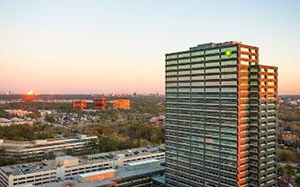 Major flooding after Hurricane Harvey knocked BP’s Westlake Campus out of commission for 3 weeks. Employees began moving back to their workspaces just south of I-10 between Eldridge and Hwy. 6 over the last few days, reports Collin Eaton — but only about a third of them: “BP executives still don’t know the full extent of the damage to its Westlake One tower, and they’re not sure exactly when it will reopen — although they expect that early next year. Floodwaters had risen to the top of the turnstiles in the lobby of the office building, filling the basement and bringing down the electrical systems. Contract workers piled thousands of sandbags around the building so they could start pumping out the rushing water.” [Houston Chronicle ($)] Photo of Westlake One, 501 Westlake Park Blvd.: Glassdoor
Major flooding after Hurricane Harvey knocked BP’s Westlake Campus out of commission for 3 weeks. Employees began moving back to their workspaces just south of I-10 between Eldridge and Hwy. 6 over the last few days, reports Collin Eaton — but only about a third of them: “BP executives still don’t know the full extent of the damage to its Westlake One tower, and they’re not sure exactly when it will reopen — although they expect that early next year. Floodwaters had risen to the top of the turnstiles in the lobby of the office building, filling the basement and bringing down the electrical systems. Contract workers piled thousands of sandbags around the building so they could start pumping out the rushing water.” [Houston Chronicle ($)] Photo of Westlake One, 501 Westlake Park Blvd.: Glassdoor

